
The top 8 famous Filipino food picks for your Easter table
Easter is around the corner, and with that comes the reunions and the trays and trays of famous Filipino food spread across family tables around the country. If you’re still struggling to come up with a final menu, why not bring one of these eight traditional dishes to your next gathering?
Lechon: a centerpiece for your Easter table

Coming from the Spanish word for “suckling pig,” lechon is a dish that has become synonymous with Filipino festivals and celebrations. Signifying the importance of an occasion, a host will usually have a whole piglet or adult pig—shiny with glaze and a mouthwatering reddish brown from hours of roasting— carried into a gathering as the centrepiece of a party’s buffet.
This famous Filipino food is prepared at least 4 hours before serving, with the entire recipe involving both the slaughtering and roasting process. A freshly slaughtered pig is rubbed or stuffed with flavours, such as lemongrass, garlic, onion, salt, and pepper. A pitmaster then pierces the meat with a long skewer and roasts it for hours. As assistants continuously rotate the spit, they brush the pig with the pitmaster’s signature glaze, which could be soy sauce, oil, soda, or even evaporated milk.
Finding the right flavour
The lechon’s flavour will vary depending on where it is cooked. So if you do decide to bring this delicacy to your Easter party, remember the key differences between the dish’s Luzon and Visayas variants. Luzon lechon will be rubbed down with salt and pepper and served with a signature liver sauce or sarsa. Meanwhile, the Visayan lechon is stuffed with spices before roasting, resulting in a roast pig that is so flavorful it can be enjoyed with no other condiments.
A taste worth celebrating
So ingrained in Filipino culture is the lechon that some people throw festivals for it. Every 24 June in Balayan, Batangas, residents celebrate the Feast of St. John the Baptist with the Parada ng Lechon (Parade of Lechon) to thank their patron saint for the blessings they have received in the previous year.
With a lechon for your upcoming celebration, you will surely be staying true to your Filipino roots.
Pancit: a versatile staple food
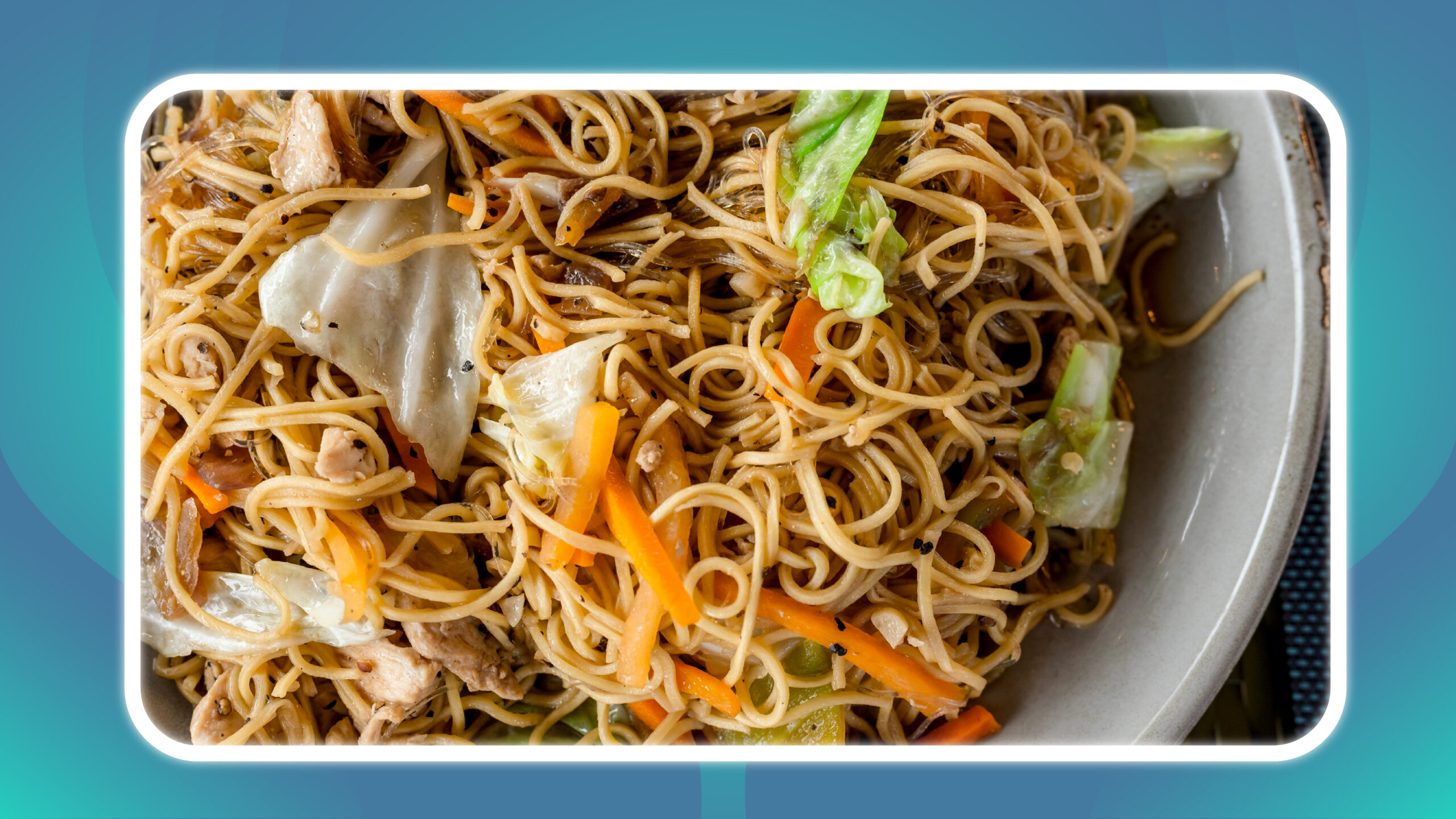
Pancit is the general name for several stir-fried-noodle dishes served in the Philippines. Centuries of trade and immigration from China introduced it to the country. According to TasteAtlas, “[Pancit] has Chinese origins, and the name of the dish is derived from the Hokkien phrase pian i sit, meaning something convenient, cooked fast.”
While today we serve pancit to wish someone a healthy, long life, this stir-fried dish was first served as the first fast food option in the county. It used to cater to factory workers and travellers during the Spanish colonial period. Nowadays, this famous Filipino food has evolved to accommodate the Filipino palate, with unique variants that reflect the flavours of our many provinces.
Sample these noodles on your upcoming Easter gathering:
- Pancit canton – Wheat noodles stir-fried in soy sauce, ginger, or oyster sauce and served with meat, poultry, seafood, and vegetables
- Pancit bihon – Thin rice noodles stir-fried with chicken or pork and vegetables and topped with freshly squeezed calamansi juice
- Pancit Malabon – Chopped rice noodles with a distinct red-orange sauce made from shrimp juice, fish sauce, and annatto. Filipinos designed the colour and toppings of seafood, pork, dried fish, sliced eggs, and chicharron of Pancit Malabon to resemble the Spanish paella.
Adobo: globally-acclaimed famous Filipino food
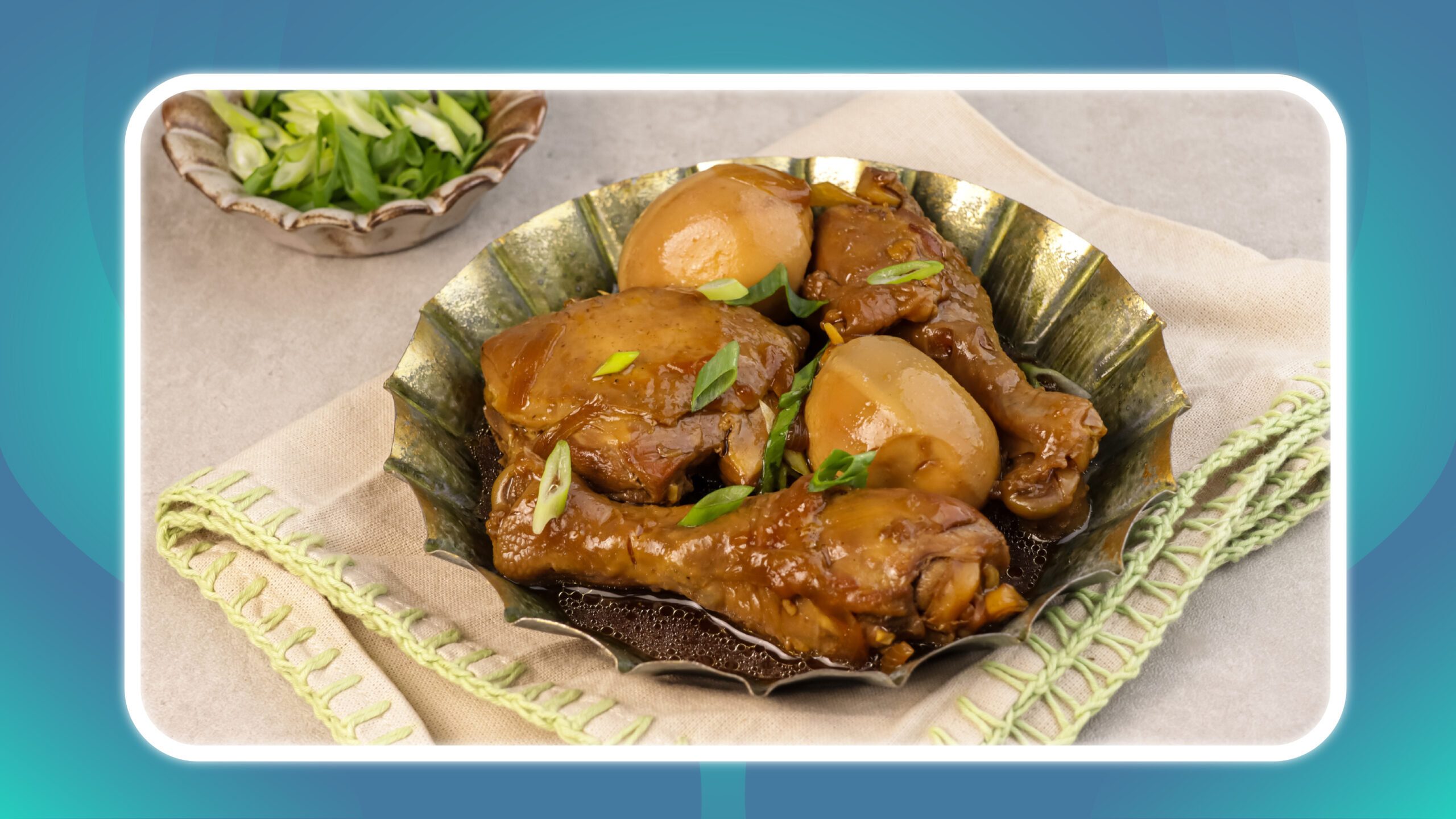
While the name adobo comes from the Spanish word adobar, meaning “to marinate,” the Filipino adobo has already existed long before the Spanish arrived in the Philippines.
According to Esquire Philippines, the original Filipino adobo was vinegar-based and probably called kilaw, a Tagalog word for a “mixture of salt, vinegar, and chili pepper” used to marinate and cook viands like carabao meat and fish. The Franciscan friar Pedro se San Buenaventura observed the locals making this dish, likened it to the Spanish adobo, and called it as such in his 1613 Tagalog dictionary.
After some time, the Chinese introduced soy sauce to the Philippines, and it too was added to our adobo.
Today adobo is one of our famous Filipino foods, known for its garlicky sauce made delicious by vinegar, soy sauce, and bay leaves. There are different ways to cook adobo depending on the province, but that hint of vinegar will always be around.
Here some types of adobo you may want to bring to your next get-together:
- Chicken-pork adobo – This kitchen mainstay simmers your viands in vinegar, soy sauce, and garlic.
- Adobong pusit – Panlasang Pinoy’s version boils squid in a mixture of vinegar and soy sauce before sautéing the viand in “garlic, onions and tomatoes.”
- Adobong puti – This version of adobo has no soy sauce; the recipe calls for you to marinate and cook your choice of viand in vinegar.
- Adobo sa gata – This adobo adds a final touch of coconut milk to change the texture and flavour profile of the sauce.
Lumpia: a crowd-favourite at parties

According to Tasting Table, “Lumpia is derived from two Hokkien words, lun meaning moist and pia meaning pastry.” This famous Filipino food arrived with Chinese immigrants from Fujian province who settled in the Philippines centuries ago.
Over time, the lumpia became a popular part of our cuisine—with fried, fresh, and sweet variants to boot! Here are some of the versions of lumpia you may want to bring for Easter:
- Lumpiang Shanghai – This savoury fried roll is filled with ground meat, chopped vegetables, and spices enveloped by a flour wrapper. The lumpia’s unique wrapper differentiates itself from other wraps in Asian cuisine because of its circular shape.
- Lumpiang Ubod – A delicacy of Silay City in the Philippine province of Negros Occidental, lumpiang ubod is stuffed with lettuce, shrimp and pork, and a hearty helping of ubod or heart of palm. It comes with a sweet soy or peanut sauce and a topping of crushed peanuts or chopped garlic.
- Turon – To make this sweet version of the lumpia, cover sweet saba bananas in brown sugar and place them in a lumpia wrapper before frying them to golden brown perfection. You can also pair the banana with other fruits and tubers, such as jackfruit, ube, or mango.
Sisig: a taste of Kapampangan heritage
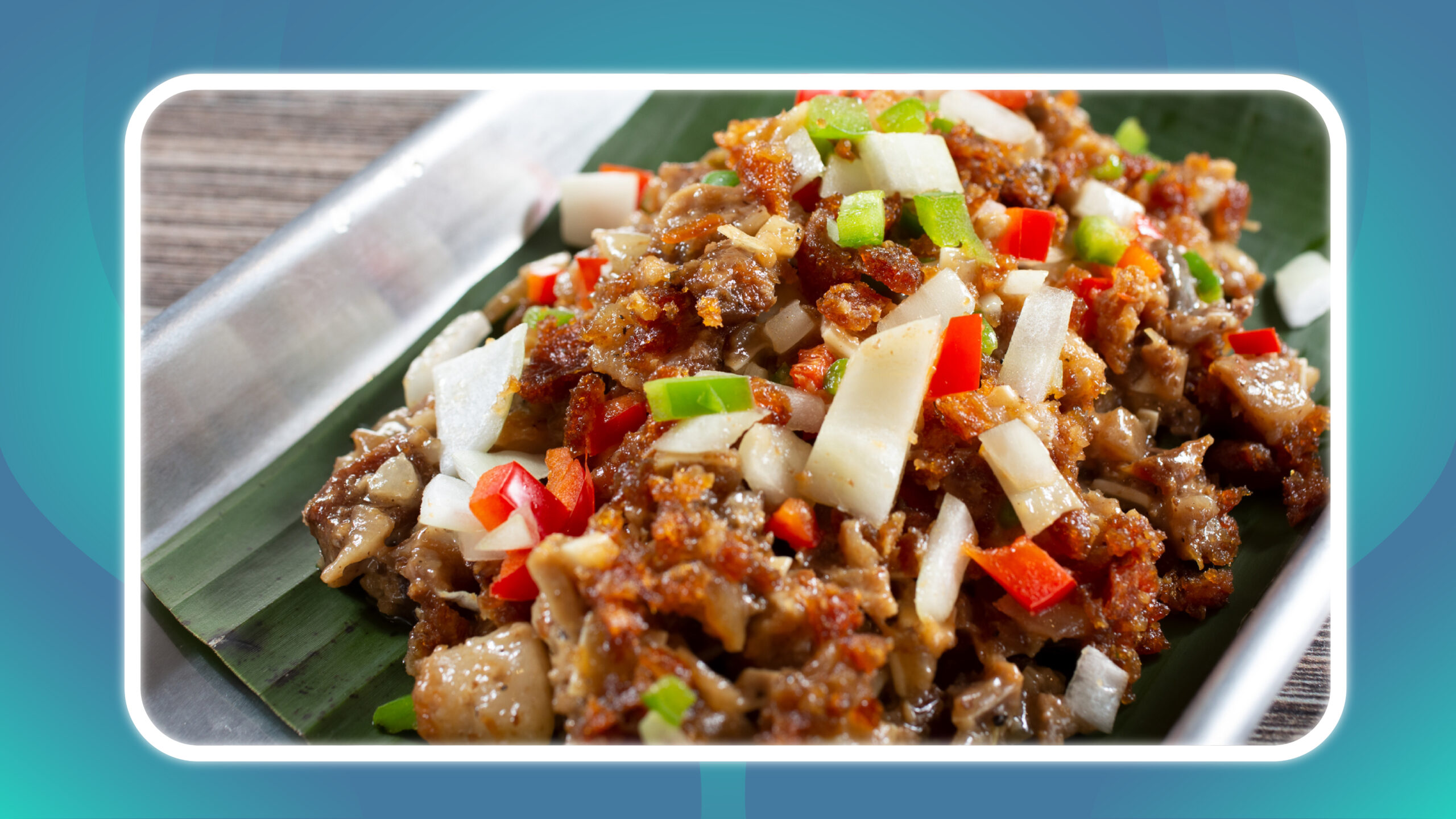
Sisig traces its roots in Pampanga, the culinary capital of the Philippines. We first heard about sisig in an 18th-century Spanish-Kapampangan dictionary, which defined the word as a salad with a vinegar-based dressing.
People traditionally consumed this sour Kapampangan salad to cure hangovers or to help pregnant mothers develop healthy babies. It would remain a side dish served with other food until the American occupation of the Philippines.
By the 1960s and 1970s, operations at the United States Air Force Base in Clark, Pampanga were in full swing. The base’s commissaries were busy feeding hungry airmen. However, they were picky with the cuts of pork and frequently discarded the innards and heads.
Wanting to avoid waste, local eateries offered to buy the pork the Americans would not consume, using their purchases to flavour their relishes. It was in one of these eateries that Lucia Cunanan, more commonly known as Aling Lucing, accidentally burned an order of pig ears in 1976 and saved the dish by creating the sisig we know and love today.
The modern sisig
The modern sisig consists of grilled pig cheeks, ears, and innards that are fried with chicken liver and served with vinegar and calamansi. Thanks to Benedicto Pamintuan, we now serve sisig in a sizzling plate to keep the pork fat hot.
Over time, sisig gained popularity, reaching Manila, and even winning the heart of the late American chef and author Anthony Bourdain. He said that this famous Filipino food was “perfectly positioned to win the hearts and minds of the world as a whole.”
It has now reached tables all over the world and is locally honoured every year with a sisig festival in Angeles City, Pampanga. This festival recognizes sisig as an Intangible Cultural Heritage.
Sinigang: healthy famous Filipino food
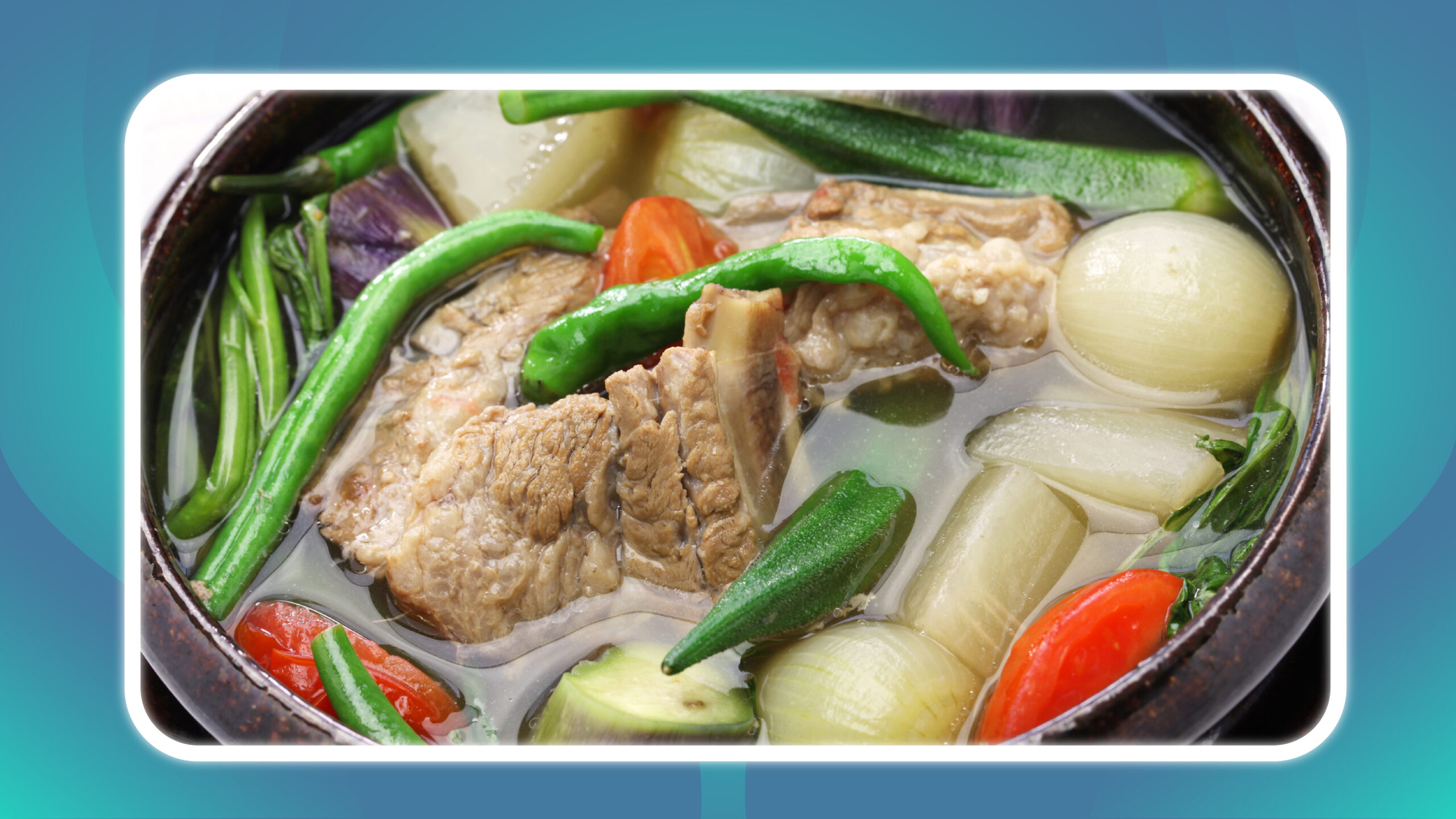
Sinigang, a sour soup served with a bundle of vegetables and seafood, meat, or even poultry, has been dubbed as the best vegetable soup of 2021.
You can use different types of souring agents depending on the type of sinigang you will be cooking, such as tamarind, guava, green mangoes, santol or cotton fruit, and calamansi.
With its various proteins and array of vegetables, this famous Filipino food is not only popular but also nutritious. The Philippines’ National Nutrition Council (NNC) even detailed how each iteration of sinigang can help people eat healthy. Here is the gist of what they said:
- Seafood sinigang – Served with fish or shrimp, this sinigang is good for diners who want to reduce their cholesterol. This soup, made sour by tamarind, can also nourish the body with Omega-3 fatty acids depending on the type of seafood in the bowl.
- Pork sinigang – Aside from being sour, gabi or taro adds to this sinigang’s flavour. Replacing the kangkong (water cabbage) in the dish with kamote (sweet potato) leaves can provide the body with Vitamin A, which nourishes the eyes.
- Beef sinigang – You can use tomato as a souring agent for this sinigang. Not only does this fruit make your soup tasty it also contains Vitamin C and lycopene, which are good for the heart and immune system.
- Chicken sinigang – This low-fat, low-cholesterol sinigang is perfect for an even healthier diet.
Kare-Kare: famous Filipino food at fiestas

The origin stories of this famous Filipino food differ depending on whom you ask. Some would say kare-kare is a Kapampangan dish, while others say it is a Tagalog innovation. Some groups claim that Indian immigrants who missed their curries from home brought the dish to the Philippines.
Theory #1: from the Kapampangans
The Kapampangan inherited the kari from their ancestors from across Southeast Asia. According to Esquire Philippines, the original kari “was at most a mudfish stew complemented with a blend of ginger, turmeric, [lemongrass], key lime peel, and safflower.” Pampangos incorporated peanuts into the dish after the legume arrived in the Philippines.
As some Kapampangan moved to Manila, some enterprising cooks made kari and sold it to fellow Pampangeños under the shade of huts called kariyan. Later on, the kariyan would be called the karienderya.
Wanting to get a share of the market, Tagalogs built their own huts and sold their own version of the Pampangeño curry, using fewer spices. The Kapampangan reportedly called this kari—which was coloured by atsuete or annatto instead of safflower—kari-kari, an imitation kari.
Theory #2: inspired by Indian cuisine
Meanwhile, another version of the story credits the creation of kare-kare to the Indians who arrived during the brief British occupation of Manila and Cavite in 1762 and chose to stay even after the British left the Philippines in 1764. Recreating their local meals, they cooked a version of traditional Indian curry with annatto, peanuts, bagoong alamang (shrimp paste), and local livestock, serving it in their own kariyan.
Today, we serve kare-kare as a peanut stew with ox tripe and tail, accompanied by a side of shrimp paste and a plate of bok choy, eggplant, and long beans—a mouthwatering dish for the Easter table.
Kaldereta: a Filipino classic
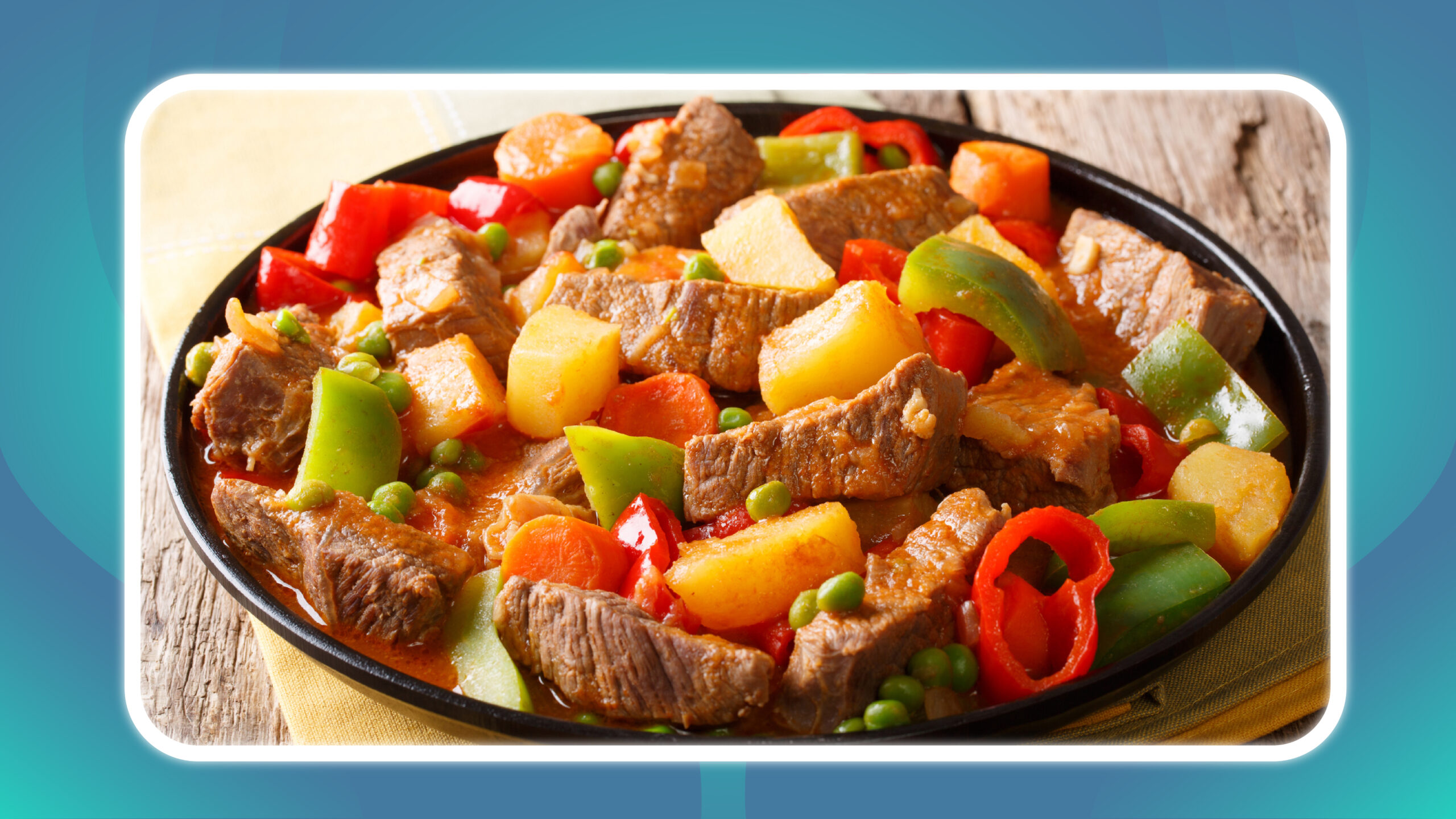
Coming from the Spanish word caldereta, meaning “cooking pot” or “stock pot,” the Filipino kaldereta is a goat or beef stew flavoured by chicken liver or liver spread.
Often confused with other red dishes like menudo and afritada, this famous Filipino food is red because of its tomato-based sauce. Cooks usually spice up the stew with bell peppers or chili peppers and a helping of bay leaves.
Despite having a similar base to other red stews, you will know you’re eating kaldereta when you can distinguish the flavour of liver in every mouthful.
When you bring this dish to your next potluck, make sure it comes with a big bowl of rice.
Celebrating Easter in the Philippines
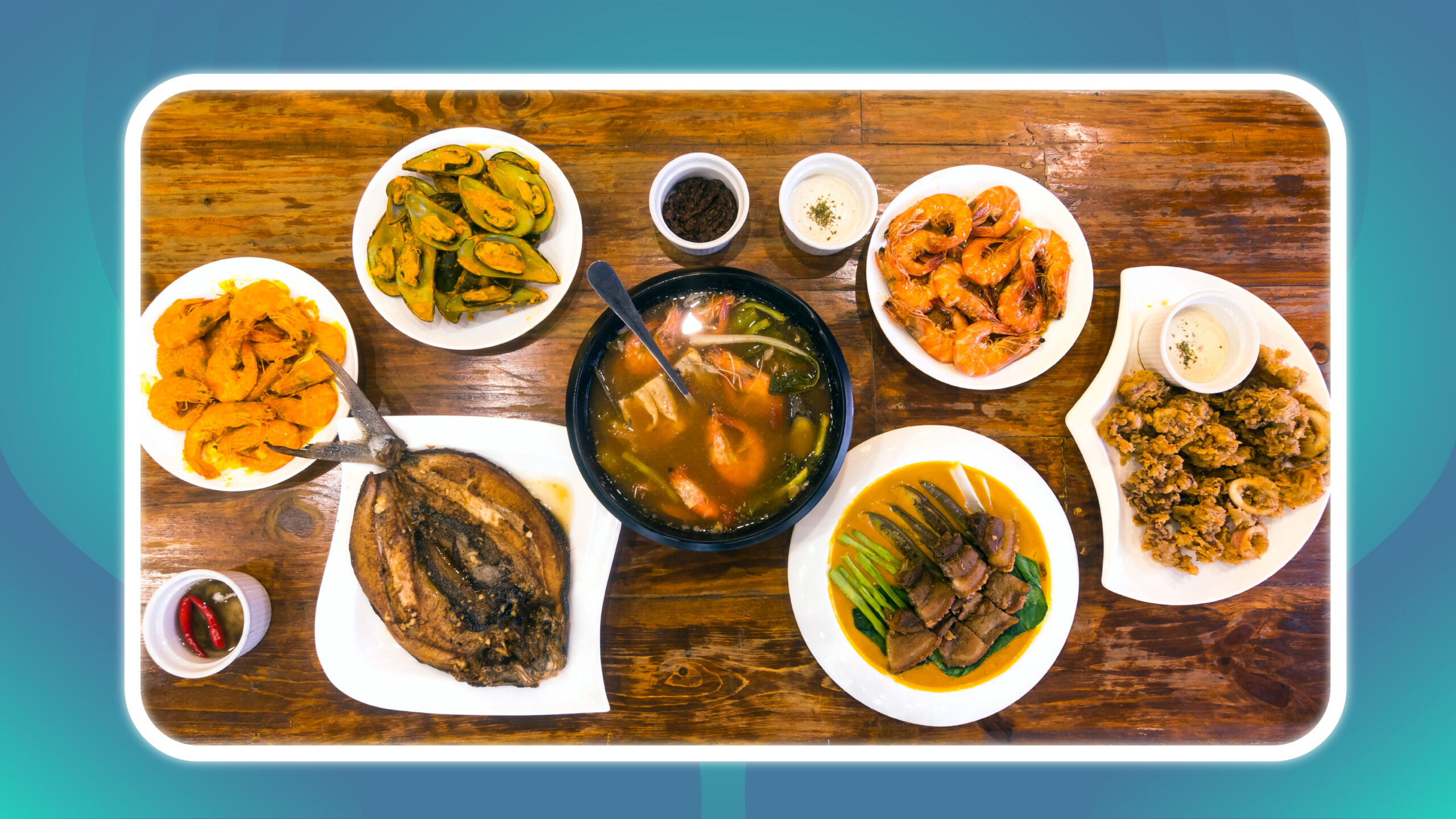
Whether you’re coming home for Easter or sending love from abroad, always secure your funds by using a secure money transfer app like Kabayan Remit. With its bank-level security features, you can rest assured that your hard-earned savings reach the right people.
